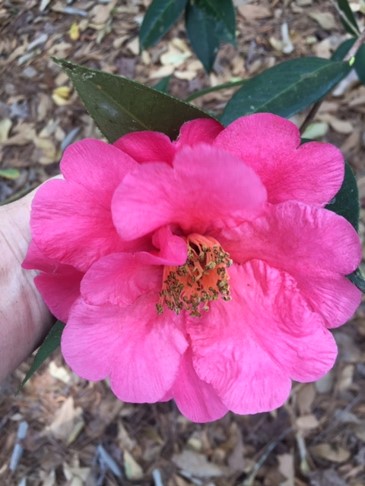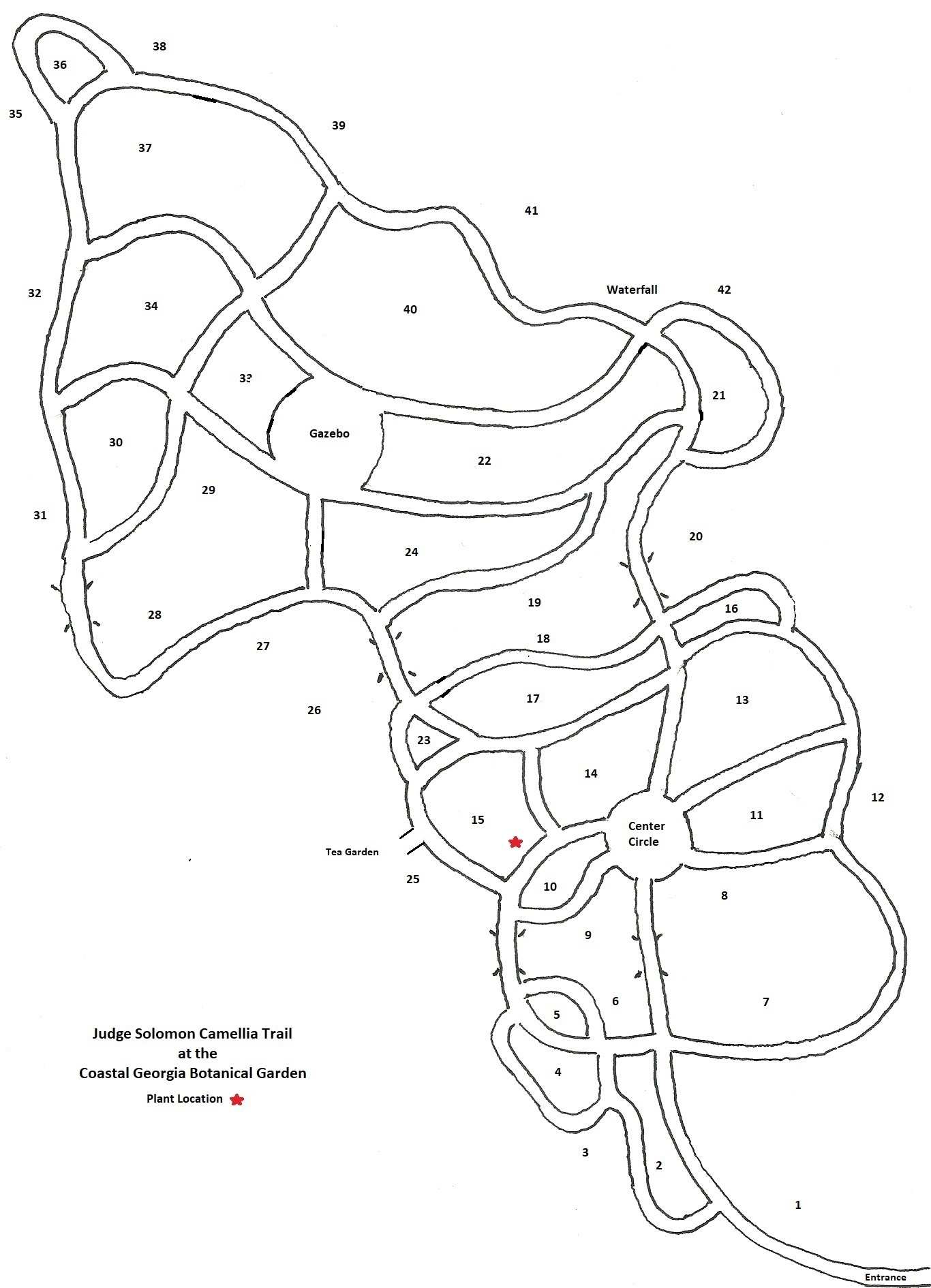Sweet, 1830, Hortus Britannicus as Captain Rawes; Booth, 1830,
Transactions of the Horticultural Society of London, 7:519-562 as
‘Captain Rawes’ Camellia’. A very large semi-double to incomplete double
flower, 14-17cm across. Bright rose madder, lighter towards the centre.
Petals about 15 in two rows, waved and undulated. Anthers, first bright
yellow, darkening with age. Leaves, dull green above, light, glossy
green below, distinctive veining, broad-elliptic, 8.5-9.5 cm long by
3.5-6 cm wide, blunt apex, finely and sharply serrate. Open growth
habit, forming a small tree up to 10 meters in height. The first
introduction of C.reticulata was made by the East Indiaman skipper,
Captain Rawes, in 1820, who brought back from China an unnamed camellia,
which he gave to Thomas Carey Palmer of Kent, England, where it flowered
in 1826. In 1824 a further import was made by John Dampier Parks which
flowered in 1827 and a description and illustration was published in the
Botanical Register (t.1078), 1827 by John Lindley who gave it the
botanical rank of C.reticulata. In the same year an illustration of
Captain Rawes’ plant was published in the Botanical Magazine, (t.2784)
but exhibited differences to the plate of Park’s plant. As pointed out
by Robert Sealy in a letter to Kew 26/2/63, the illustration of the
plant imported by Parks has a well developed gynoecium while that of
Rawes’ importation does not. It would thus appear that a fertile and an
infertile form may have been introduced. This would seem to be borne out
by the fact that the camellia generally known as ‘Captain Rawes’ has
proved to be a most infertile triploid. On the other hand there have
been reports from time to time of seedlings from what is nominally this
camellia. The first name given, that of Camellia reticulata, is regarded
as a species name and not applicable as a cultivar name. Other names
applied, such as ‘Semi-duplex’ and ‘Semi-plena’ are invalid as
‘Semi-duplex’ was used for a C.japonica in 1810 and ‘Semi-plena’ also
in 1822. The name ‘Captain Rawes’ Camellia’ was also applied to the
C.japonica cultivar Rawesiana, making it invalid for the C.reticulata.
Earlier reports than 1830 of names in Japanese literature, have been
‘Tō-tsubaki’ and ‘Kara-tsubaki’, These translate as “Chinese Camellia”
and appear to refer to C.reticulata as a group, rather than a cultivar.
No Chinese name has been located in that country for the cultivar and it
has recently been re-introduced to the land of its origin where it has
been given the synoym ‘Guixia’ or ‘Returning Cloud’. Jane Taylor in The
Milder Garden 1990, p.206 erroneously states: “introduced (by Robert
Fortune) in 1820”. The plant introduced by Robert Fortune is ‘Pagoda’
(Songzelin). Further synonym: ‘Chinese Peony-Flowered’. Orthographic
error: ‘Captain Rowes’. For colour illustations see Urquhart, 1960, The
Camellia, pl.XXI; and Macoboy, 1981, The Colour Dictionary of Camellias,
p.152; American Camellia Yearbook, 1947, p.119 and 1975, p.149. Received
RHS, F.C.C., 1963. Originated in China.
|
|
|
|


